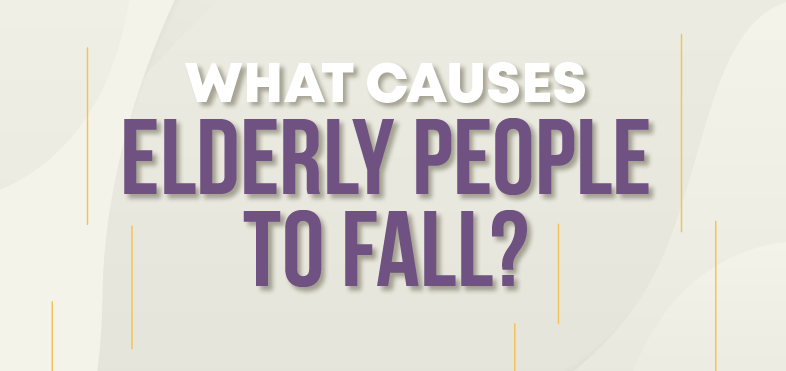What Causes Elderly People to Fall? (Infographic)

According to data from the Centers for Disease Control and Prevention (CDC), falls are the number one cause of fatal and non-fatal injuries in Americans aged 65 and older.
The best way to avoid is to address the possible issues and minimize the harm before it may threaten the health of the loved one. Not every accident can be avoided but taking certain preventive measures can prolong the independence of the elderly and greatly reduce their risk of injury.

What Causes Elderly People to Fall?
-
A Decline in Physical Health.
Many adults become less active as they age, which increases the physiological effects of aging. The lack of light exercise may result in decreased muscle strength, decreased bone quality, loss of balance and coordination, and decreased flexibility.
-
Impaired Vision.
Age-related eye diseases can make it difficult, if not impossible, to detect fall hazards, such as steps, and thresholds. Even if a senior is in top physical condition, failing to see obstacles or changes in ground level can lead to a nasty tumble.
-
Medications.
Side-effects, such as drowsiness, dizziness, and low blood pressure, can all contribute to an accident. Sedatives, anti-depressants, antipsychotics, opioids, and some cardiovascular drugs are the most common culprits.
-
Chronic Diseases.
Health conditions such as Parkinson’s disease, Alzheimer’s disease, and arthritis cause weakness in the extremities, poor grip strength, balance disorders, and cognitive impairment. Poor physical health increases a person’s initial risk of falling and minimizes their ability to respond to and recover from hazards, like tripping or slipping.
-
Surgical Procedures.
Hip replacements and other surgeries can leave an elderly person weak, in pain and discomfort, and less mobile than they were before the procedure. This can be temporary while a patient heals or a new and lasting problem.
-
Environmental Hazards.
A big percentage of falls in the elderly population occur in seniors’ homes. Environmental factors such as poor lighting, clutter, areas of disrepair, loose carpets, slick floors, and lack of safety equipment can jeopardize a senior’s safety in their home.
-
Behavioral Hazards.
A person’s fall risk is influenced by their unique lifestyle and behaviors. This includes the types of activities they engage in, the level of physical demand these activities require. For example, laundry is a normal daily activity for many people, but it can involve a great deal of exertion for a senior, especially if they transport a heavy laundry basket. Failing to modify behaviors can be a contributing factor for falls in older individuals.
A fall rarely occurs due to only one of the reasons listed above. The combination of any of these factors can lead to a serious, possibly life-threatening injury. To keep your loved one safe and healthy, research into how you can modify their home and lifestyle to prevent fall-related injuries.

Comments